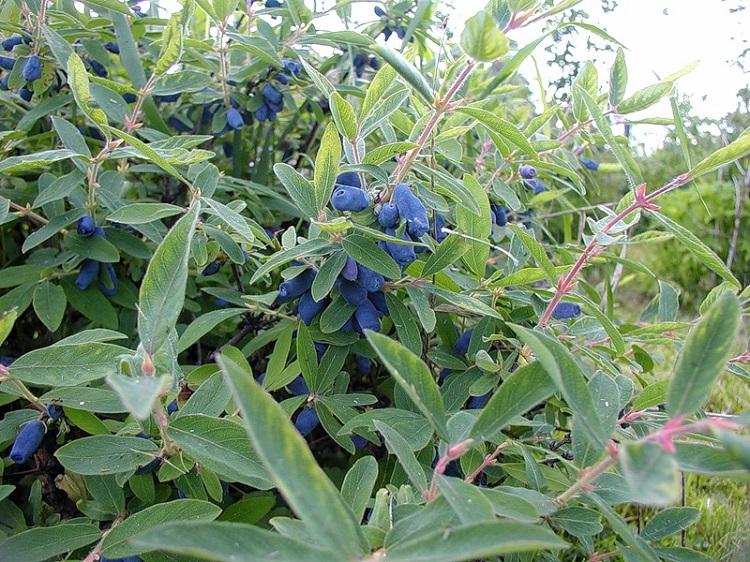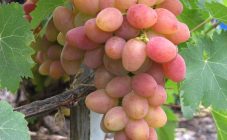Content:
The plant called "barberry" is an impressive bush on which grows not very large berries, protected by sharp thorns. The presence of a large number of fruits and colored foliage is the reason that this shrub is often used as an element of landscape design.
Most novice gardeners would like to learn more about how barberry is planted on private land plots. To answer this question, we note that planting barberry in domestic conditions is not difficult at all, for this it is enough to adhere to strictly established rules.
Planting barberry can be done both in autumn and in spring (end of March - April). In the case of storing seedlings in a container for planting them, you can choose summer, necessarily the days preceding the hottest period.
The procedure for breeding barberry by planting in the soil will be considered separately, and its step-by-step nature must be strictly observed.
Features of the view
The features of a garden plant under this name include the presence of small-sized fruits with a slightly elongated pear-shaped shape. In addition, it is distinguished by the presence of many small elliptical leaves of various colors (from yellow and green to dark purple), which allows it to be used as a decorative element of the landscape.
In spring, yellow flowers gathered in clusters appear on the barberry bushes, which, when autumn comes, are replaced by attractive berries of bright colors.
Juicy fruits that have a deep red color, slightly sour in taste and are ideal for making syrups, jelly or jam, and are also used in medicine and culinary production. In the process of growing, the seedling does not need special care and is distinguished by its unpretentiousness and enviable frost resistance.
The most important thing is that it will not always be possible to grow a beautiful and proportionally developing bush from cuttings in a close environment. If you want to use a barberry sapling as a decorative hedge in the future, you should try to make the bush more voluminous.
Breeding and landing procedure
Propagation by green cuttings
At any time (spring, summer or even autumn), this shrub is allowed to be cuttings, that is, to plant it in the form of separate branches with shoots. For this, annual, slightly stiff cuttings, 15-20 cm long, with at least 4-5 internodes are optimal. When the beginning of the season is chosen for transplanting barberry, it is recommended to wait for the swelling of its buds before planting barberry in spring. Moreover, you can hold the cuttings in the refrigerator for a while, and proceed to rooting in the ground only after the final warming up of the earth.
Before propagating barberry in summer or autumn, its propagation by cuttings should be carried out in the same way, that is, be careful to ensure that the bark on the branches does not have time to completely stiffen.
With autumn cuttings, this procedure should be started as late as possible, but not before the arrival of severe frosts. In this case, the usual approach to harvesting shoots involves cutting them with a sharp knife and then placing them in a container with moistened sand.
Experts advise during storage to regularly monitor the condition of future seedlings. To do this, open the container and check if mold has formed on the roots. They are planted in the ground, as in the spring, only after the ground has completely warmed up. But before that, it is recommended to use a small garden greenhouse, in case of successful development in it, transplant the plant to a permanent place.
Barberry allows reproduction by seeds, but this process requires separate consideration.
Landing
Classic propagation of barberry by cuttings in spring is carried out by planting them in pre-treated and suitably prepared soil. Before you propagate barberry by cuttings, you need to worry about choosing a suitable place, the rules of which were discussed above.
Before planting and growing it, it is necessary to clear the area allotted for these purposes from weeds and plant roots, as well as carefully dig up and fertilize the soil (this must take into account its acidity and fertility).
A typical instruction for planting barberry is as follows:
- First, a hole is prepared for planting, measuring 40x40x40 cm;
- Then half a bucket of water is poured into it, which should saturate the soil well (without the formation of stagnation);
- After that, the bottom is closed with a special drainage material (dry foliage, sawdust mixed with crushed stone or sand);
- Further, on top of the drainage, river sand and a sod layer of earth, well mixed with compost-humus (8-10 kg), are poured in layers.
Self-planting of barberry in the spring with high acidity of the garden soil is carried out with the addition of a portion of lime (about 400 grams) and a little wood ash (about 200 grams).
To successfully plant seedlings, instead of organics, you can prepare mineral fertilizers, including superphosphate (200 grams) and widespread potassium sulfate (100 grams). After that, his seedlings are lowered into a previously prepared hole, then half a bucket of water is poured onto them.
At the final stage, the planting surface is additionally mulched with compost (in extreme cases, peat).
When placing layering in the ground, it is important to observe the following requirements:
- The root collar of the seedling should be located above the soil surface;
- Experts advise to cut off the upper part of the sprout placed in the hole, leaving only 5 or 6 strong buds;
- A technically competent and correct approach to planting barberry involves the obligatory tracking of the position of its roots, which should not have contact with fertilizers.
In case of violation of the last requirement, the shoots may receive a severe burn, as a result of which the seedlings may become ill or completely die. Since large accumulations of moisture are detrimental to barberry, it is advisable to choose hills for planting it. To ensure the possibility of soil drainage, sand is added to it.
Growing
The main problem of growing this heat-loving shrub is its wintering. Moreover, in the first couple of years, barberry is sheltered from frost with burlap, spruce branches, peat, or, in extreme cases, dry foliage.With a significant size of a young plant, its branches can be pulled off with a rope, and then a small cylindrical fence can be made around and dried autumn leaves can be poured into it (grown bushes usually do not need such a shelter).
If the winter happened to be very frosty, it is recommended to prune the strongly frozen branches with the arrival of spring. In addition, when growing barberry, a lot depends on which neighbors were "attached" to it.
Hedge
A solid and fairly dense barberry hedge can be obtained if it is placed at the rate of 3-4 bushes per one running meter.
When staggered, the seedlings should be planted after about 25 cm. At the same time, the distance of one row from the other should be at least 45 cm. To obtain a more thinned "live" fence, the total number of bushes in one row must be reduced.
If you propagate barberry in order to get berries, it will require a lot of light for its normal growth, which also forces it to be planted not very densely.
As for the quality of the land where the dacha with a hedge is located, the requirements for it are practically the same as for an ordinary ornamental shrub. In a situation where the soil in this place has increased acidity (over 7.0 pH), it is allowed to add slaked lime both before planting bushes under the hedge, and after it.
Barberry care
Caring for barberry bushes comes down to their watering, periodic weeding, as well as nutritious feeding and pruning (haircut).
Due to the fact that barberry does not need a lot of moisture, it can be watered only once a week (abundant watering is necessary only for newly planted and not yet matured plants). This should be done in a special way, pouring not very cold water directly under the root and protecting the leaves of the bush from moisture.
In addition to mandatory watering, barberry needs regular weeding, which boils down to removing the weed growth between the bushes and the subsequent loosening of the soil in this place.
Fertilizers applied when planting barberry bushes can last about a year, so the next top dressing is usually done next spring. Whenever possible to choose the type of nutritional supplement, preference is given to nitrogen fertilizers. You can get a good result if you take about 20-30 grams of urea, and then dilute it in a bucket of water. After that, each bush is watered with the finished composition separately.
In a situation where barberry is grown for the purpose of obtaining berries, at the end of the flowering stage, as well as at the end of the season, each of its bush is fertilized with a mixture of superphosphate and potassium.
In conclusion, we note that caring for the appearance of a barberry is reduced to pruning its branches, growing strictly vertically. By careful pruning, ornamental shrubs can be given almost any shape (ball, regular pyramid, etc.).


















